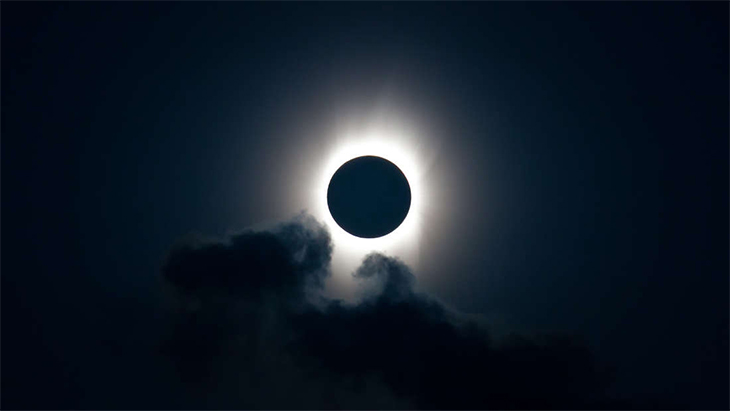By: Jonathan O’Callaghan/IFL Science Most of the US right now is gearing up for a total solar eclipse on August 21, the first eclipse to cross the mainland since 1918. Our far distant descendants, however, may never experience such an event.
That’s because the Moon is slowly moving away from Earth, at a rate of about 4 centimeters (1.5 inches) per year. Sadly, this means that in about 600 million years, it will no longer be big enough in our night sky to cause a total eclipse of the Sun.
A total eclipse occurs thanks to an odd mathematical phenomenon. Our Sun happens to be 400 times further than the Moon, while its diameter is also 400 times greater. Thus, when the Moon passes in front of the Sun, it can block out its entirety, known as a total solar eclipse.
Eclipses come in several shapes and forms, because the orbit of the Moon is not regular. In fact, it gets a bit closer and further from us all the time, swinging between a distance of about 406,000 kilometers (238,000 miles) and 356,000 kilometers (221,000 miles).
At this shortest distance, the Moon’s disk does not entirely cover the Sun. This leads to what we call an annular eclipse, or a “ring of fire”, where the outer disk of the Sun appears around the Moon.
If the Moon doesn’t completely pass in front of the Sun, and leaves a portion of it uncovered, this is known as a partial eclipse. A hybrid eclipse, meanwhile, is one that changes from an annular to a total eclipse during the event.
Video credit: NASA Goddard Space Flight Center
A total solar eclipse happens about once every 18 months in any location on Earth – although any one place in particular will see one much less frequently. Other eclipses are more common, but it’s obviously total eclipses that get the most attention.
When the Moon first formed (probably from a Mars-sized body hitting Earth) 4.5 billion years ago, it would have been as close as 23,000 kilometers (14,000 miles), about 15 times closer than today. Back then, eclipses would obviously have been a lot more frequent, and over a much larger area.
The gravitational interaction between our two worlds has caused the Moon to drift away over time, as tidal bulges on the oceans give energy to the Moon’s orbit, making it bigger. Counterintuitively, this also makes the Moon move slower.
In Earth’s more recent history, going back to the dawn of the dinosaurs several hundred million years ago, the size of the Moon probably hasn’t changed that much. But in a relatively short blink of an eye, the Moon will no longer be large enough to block the Sun in our sky.




